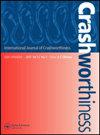Application of Macro Element Method (MEM) for faster automotive crash safety design during concept stage
IF 1.8
4区 工程技术
Q3 ENGINEERING, MANUFACTURING
引用次数: 0
Abstract
AbstractThe non-linear nature of vehicle crash safety simulations using the Finite Element Method (FEM) usually requires a significant investment in computational time and resources, in addition to the requirement of full CAD (Computer Aided Design) data availability, which is challenging to obtain during the concept stage. The current work explores the usage of Macro Element Method (MEM) based on simplified Super Beam Element (SBE), for which the shape functions are developed based on experimental observations rather than algebraic equations. MEM crash analysis run time doesn’t exceed several seconds and is one of the underutilised analytical models which can be used to quickly explore new design directions during the early concept stage of the vehicle and has higher potential to speed up the product development process. In this paper, initially, a calibration study was done to validate the MEM at a component level to compare the results with FEM and experimental values. FEM and MEM simulation models were developed and evaluated for a metallic thin-walled square frusta with varying semi-apical angles subjected to axial compression. The results were compared, and it was found that MEM results show more than 97% correlation compared to FEM and experimental results. Subsequently, a design modification was introduced in the component and the results show close degree of correlation between MEM and FEM. Similar process was followed for full vehicle level simulations, such as full width frontal crash, side pole crash analyses to understand the robustness of the method in applying it to product development environment.Keywords: FEMmacro element method (MEM)crashworthinessmachine learningsuper folding element (SFE)super beam element (SBE) AcknowledgementsThe first author would like to thank Dr. Akella Sarma for his invaluable motivation and guidance provided during this work. The first author thanks Mr. Ameet Hangarge and Mr. Arjun for their continuous support provided during the work.Disclosure statementNo potential conflict of interest was reported by the author(s).宏元法(MEM)在汽车碰撞安全概念设计中的应用
摘要采用有限元法进行车辆碰撞安全仿真,由于其非线性特性,不仅需要充分的计算机辅助设计(CAD)数据可用性,而且在概念阶段很难获得,因此通常需要大量的计算时间和资源投入。本文研究了基于简化超梁单元(SBE)的宏观单元法(MEM)的应用,该方法的形状函数是基于实验观测而不是代数方程来开发的。MEM碰撞分析运行时间不超过几秒,是一种未被充分利用的分析模型,可用于在车辆早期概念阶段快速探索新的设计方向,具有加快产品开发过程的更高潜力。本文首先在部件水平上进行了校准研究,以验证MEM,并将结果与FEM和实验值进行比较。建立了具有不同半顶角的金属薄壁方台在轴压作用下的有限元和MEM仿真模型,并对其进行了数值模拟。结果表明,MEM计算结果与有限元计算结果和实验结果的相关性达97%以上。随后,对该构件进行了设计修改,结果表明MEM和FEM的相关度较高。在整车级仿真中,如全宽正面碰撞、侧杆碰撞分析,也遵循了类似的过程,以了解将该方法应用于产品开发环境中的鲁棒性。关键词:FEMmacro单元法(MEM)耐撞性机器学习超级折叠单元(SFE)超级梁单元(SBE)致谢第一作者要感谢Akella Sarma博士在这项工作中提供的宝贵激励和指导。第一作者感谢Ameet Hangarge先生和Arjun先生在工作中一直给予的支持。披露声明作者未报告潜在的利益冲突。
本文章由计算机程序翻译,如有差异,请以英文原文为准。
求助全文
约1分钟内获得全文
求助全文
来源期刊

International Journal of Crashworthiness
工程技术-工程:机械
CiteScore
3.70
自引率
10.50%
发文量
72
审稿时长
2.3 months
期刊介绍:
International Journal of Crashworthiness is the only journal covering all matters relating to the crashworthiness of road vehicles (including cars, trucks, buses and motorcycles), rail vehicles, air and spacecraft, ships and submarines, and on- and off-shore installations.
The Journal provides a unique forum for the publication of original research and applied studies relevant to an audience of academics, designers and practicing engineers. International Journal of Crashworthiness publishes both original research papers (full papers and short communications) and state-of-the-art reviews.
International Journal of Crashworthiness welcomes papers that address the quality of response of materials, body structures and energy-absorbing systems that are subjected to sudden dynamic loading, papers focused on new crashworthy structures, new concepts in restraint systems and realistic accident reconstruction.
 求助内容:
求助内容: 应助结果提醒方式:
应助结果提醒方式:


